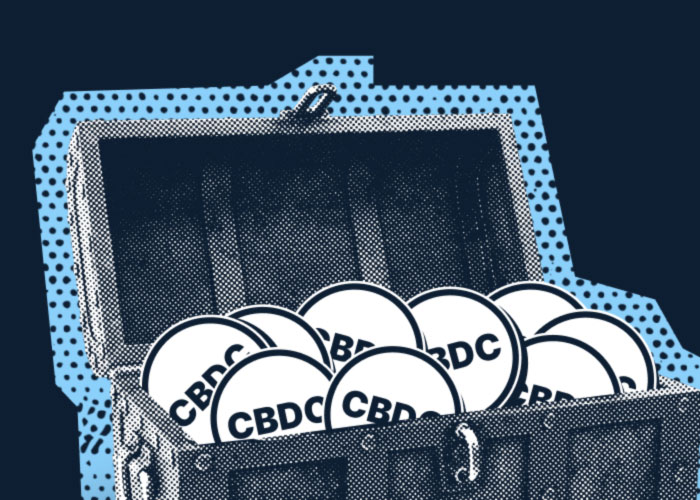At least 90% of the world’s central banks were developing government digital currencies in 2022. According to the Atlantic Council, as of the end of December 2022, 114 countries, accounting for about 95% of global GDP, were exploring central bank digital currencies (CBDC).
Analysts called a CBDC “the only solution” to transform the existing monetary system, stressing that CBDCs can improve the stability of the banking system.
Let’s examine in detail the progress countries have made in the development of CBDCs over the past year and what plans for the next year are already known.
2022 Results

Earlier this year, there were only three fully functioning digital currencies in the world:
- Sand Dollar of the Bahamas;
- DCash of the Eastern Caribbean (Antigua and Barbuda, Anguilla, Montserrat, Dominica, Saint Lucia, Grenada, and Saint Vincent and the Grenadines);
- JAM-DEX of Jamaica.
In 2022, six global banks reported on CBDC pilot launches and successes:
- In February 2022, the People’s Bank of China (PBoC) began testing the digital yuan (e-CNY) during the Beijing Olympics. By early fall 2022, the e-CNY was already being tested in 15 Chinese provinces, and the volume of transactions in China’s CBDC network exceeded 100 billion CNY (~$13.9 billion). The digital yuan became the world’s largest CBDC in 2022.
- In August 2022, the Central Bank of Nigeria (CBN) expanded the technical capabilities of the e-Naira. The initiative is designed to attract about 8 million new users. Since the launch of the pilot project in 2021, the Nigerian CBDC has about 270,000 active wallets. A total of around 200,000 e-Naira transactions worth approximately 4 billion NGN (~$9.5 million) were conducted.
- In June 2022, the Bank of France (Banque de France) started the third phase of retail CBDC testing to examine the interoperability of DLT-based platforms. In July 2022, the Banque de France launched the second phase of wholesale CBDC testing, and in November, it participated in the creation of €100 million of collateral tokens for digital bonds with the Banque centrale du Luxembourg (BCL).
- In September 2022, the Central Bank of Iran (CBI) piloted the digital rial on a distributed ledger platform Borna to test cash programmability and security.
- In November 2022, the Monetary Authority of Singapore (MAS) began testing Project Ubin+ to explore cross-border payments using wholesale CBDCs.
- In December 2022, the Reserve Bank of India (RBI) provided access to the digital rupee to about 55 million people from 13 cities across the country.
A total of 17 countries were in the testing phase of the CBDC at the end of 2022. Several of them, though not far advanced in their development, have also made progress:
- Ukraine. The National Bank of Ukraine worked out three possible variants of the future e-hryvnia.
- Sweden. The Reserve Bank of Sweden (Riksbank) successfully completed the second stage of CBDC testing and is preparing to start testing the possibility of using the digital krona for new payment services.
- Ghana. The Bank of Ghana (BoG) is actively working on the digital cedi (e-cedi) project, seeing a CBDC as the only option to expand access to financial services for its citizens. Ghana is expected to overtake Nigeria in crypto adoption soon due to CBDC developments.
- Kazakhstan. The National Bank of Kazakhstan (NKB) announced plans to test the digital tenge on BNB Chain.
- Turkey. In late December 2022, the Central Bank of the Republic of Turkey (CBRT) successfully completed the first test transactions using the Digital Turkish Lira.
In total, all the countries of the Group of Seven (G7) and 18 countries of the Group of Twenty (G20) are actively developing and exploring CBDC opportunities in 2022.
CBDC Cross-Border Projects

Apart from developing their own public digital currencies, the world’s financial institutions began joint CBDC trials in 2022.
The main cross-border projects in the past year were:
- Multiple CBDC Bridge (mBridge). The joint project was completed in September and included the central banks of Thailand, Hong Kong, the UAE, and China, along with 20 commercial banks from those regions. The initiative processed 164 transactions totaling $22 million.
- Project Dunbar. The collaborative project between the Monetary Authority of Singapore (MAS) and the Bank for International Settlements (BIS) was finished in March 2022. Central banks from Australia, Singapore, Malaysia, and South Africa took part in it. The initiative resulted in the development of two prototypes of an international settlement platform with multiple CBDCs.
- Project Sela. The project between the BIS, the Bank of Israel, and the Hong Kong Monetary Authority was launched in June 2022. The aim was to study the cybersecurity and technical feasibility of a two-tier CBDC architecture. The study results will be available in early 2023.
- Project Mariana. The joint project of the central banks of Switzerland, Singapore, and France and the BIS was launched in November 2022. The aim of the initiative was to explore blockchain technology as part of the cross-border capabilities of CBDCs. Specifically, the project will use DeFi protocols to automate currency markets and cross-border payments in CBDCs.
- Project Rosalind. The technology experiment of the BIS and the Central Bank of England (BoE) was launched in June 2022. The main goal was to develop prototypes of the Application Programming Interface (API) for secure settlements via retail CBDCs. Already in December, the BoE management announced a tender to create a prototype wallet for CBDCs.
- Project Helvetia Phase II. The collaborative initiative between the BIS and the Swiss National Bank (SNB), assisted by the SIX Digital blockchain platform, was completed in January 2022. It demonstrated the feasibility of integrating a wholesale CBDC into an existing banking system using DLT technology. Furthermore, it showed that the issuance of a wholesale CBDC is fully compliant with Swiss law.
- Project Icebreaker. An initiative by the BIS to explore options for using CBDCs for retail cross-border payments between Norway, Sweden, and Israel. The project was launched in September 2022.
- Project Cedar Phase II x Ubin+. In November 2022, the New York Innovation Center (NYIC), together with the MAS, began exploring the potential for wholesale CBDCs to improve the efficiency of cross-border payments.
SWIFT’s series of experiments to integrate CBDCs into the existing financial infrastructure became a separate initiative. In particular, the interbank system managed to conduct successful transactions between separate DLT networks using different CBDC projects in a test environment and integrating asset tokenization platforms and different types of cash payments.
Future Plans

Regarding the plans for 2023, the pace of development of various CBDCs shows no downward trend, on the contrary. There are at least five more countries planning to complete or launch pilot state digital currencies next year:
- Australia. The Reserve Bank of Australia (RBA) plans to complete the digital currency pilot by April 2023 and begin actively developing a CBDC.
- Thailand. The Bank of Thailand’s (BOT) CBDC pilot project is scheduled to be finished by mid-2023, and then the regulator will begin developing the digital currency design.
- Brazil. The country’s central bank continues to explore the digital real in a test environment, particularly in cooperation with the Stellar Development Foundation (SDF). The Banco Central do Brasil (BCB) plans to launch a public pilot program in 2023.
- South Korea. The Bank of Korea (BOK) completed two phases of retail CBDC testing and moved on to practical testing of the digital won with commercial banks. Tests are scheduled to be finished by 2023, followed by the development of the state’s digital currency structure.
- Russia. In February 2022, the Central Bank of Russia (CBR) completed the development of a prototype platform for the digital ruble and is preparing to start working on a pilot version in 2023, after which CBDC beta testing will begin.
The European Central Bank (ECB) is also actively engaged in developments. The pilot project of the digital euro will most likely start in 2023. At the same time, European CBDC will be developed primarily as a means for peer-to-peer payments between citizens of the EU.










